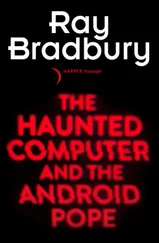Whether or not these licenses pay off, they are in keeping with the nature of the Brotherhood’s most flamboyant pair of characters. Ken and Roberta have always been as unconventional and fun-loving in their personal lives as they have been bold and innovative in their business. They have been known to hop onto a private plane and fly hundreds of miles, just to come by Brøderbund’s San Rafael offices and say hello. They like to charter raft trips, take their whole programming staff water-skiing, buy boats, build houses, and throw parties. No longer living in a cabin, they now own an enormous new home, and when I visited them in May 1984, on the occasion of On-Line’s fourth anniversary, I found out that their home is as much a living fantasy as is their business empire.
The house is a 10,000-square-foot palatial country estate, situated on five and a half acres in a crook of the Fresno River, about a half hour’s drive from the southern entrance to Yosemite. The house is built around a huge central room, an oversize racquetball court. Outside, acres of lush green lawn are watered twice a day by an automatic sprinkler system. An automatic security camera guards the gate, and the driveway is always filled with their favorite toys—cars, jeeps, pickups, snowmobiles, boats on trailers.
In many ways, the house is still an embodiment of Ken and Roberta’s old fantasy of running a software empire in the countryside. Flanking the carved front door are stained-glass images of the fantastic characters from The Dark Crystal. The kitchen is filled with automatic devices—toasters that pop out of the wall, food processors that emerge from the counter. A mammoth playroom above the racquetball court sports a huge wetbar across one end of the room and arcade video game machines lining two entire walls. Most of the rooms are beautifully rustic, with rough-cut beams, spiral staircases, and large stone fireplaces all over the place.
Ken and Roberta want it all, and they want at least some of it right now. They are able to live the style they live because they were able to persuade their investors to buy more than half a million dollars’ worth of “old stock” in On-Line, which means that part of the invested funds went straight to Ken and Roberta rather than into the company. It’s not likely that having the house of their dreams will dull their competitive urges, however. Ken and Roberta have always wanted more, and I imagine that they always will.
At least as far as Gary and I are concerned, the informal association of friends we called the Brotherhood also included people who were instrumental in helping us get Brøderbund off the ground. Among those people were Al and Margot Tommervik of Softalk magazine. Softalk was born in Los Angeles on September 12, 1980, roughly six months after Gary and I started Brøderbund. Al Tommervik, a thin, pipesmoking man, was a copy editor at Variety magazine. He has a long red beard and almost equally long red hair. Margot, even thinner than Al, has long, straight brown hair that emphasizes the angularity of her features; she had held a wide variety of jobs, but in 1980 she was working as a freelance writer. She was also an inveterate game player, and earlier that year she had won $15,000 on the television show “Password.”
One of the things that Al and Margot decided to buy with Margot’s winnings was a computer, and they settled on an Apple. Although they were not particularly technically inclined, they fell deeply in love with their machine and were soon scouring the landscape for software. Then Margot saw Ken and Roberta Williams’s first adventure game, Mystery House, in a store, and she bought it immediately. By this time, On-Line Systems was sponsoring a contest that offered a prize to the first person who could solve the game. Margot couldn’t resist a challenge like that, and she worked full time on the game until she had solved it. Her solution won, and when she and Al started Softalk, they decided to include a contest of some sort in every issue. It was one of the most popular parts of the magazine.
Softalk, or rather a prototype of it, was in fact already in existence before Margot and Al got involved with it. It was initially just an in-house newsletter for a small software publisher, called Softape, which published a variety of Apple software on cassette tapes. Virtually everyone who had an Apple in early 1980 had at least one or two of Softape’s programs. As for their in-house newsletter, the Softape people at one point were looking for someone to manage it. They hired Margot, who was a natural for the job, and who was by this time totally enthralled with computers. But Margot had even bigger plans for the newsletter than just to manage it—she wanted to go national with it, to take the newsletter and turn it into a full-scale magazine that every Apple owner in the country would read.
Margot was ambitious, but she wasn’t a mercenary in terms of dollars and cents; her motivations were more evangelistic than financial. She’s always been one of the most gregarious, community-minded members of all the microcomputer enthusiasts I’ve known. Perhaps one of the reasons behind her ambition was a hope that the magazine would bring her into closer touch with the growing group of like-minded people who owned Apples and played with them, often to the exclusion of all other activities.
So Al and Margot, a couple of the Softape people, and an investor named John Haller formed Softalk Publishing, Inc. Softalk magazine was intended to be distributed free to all owners of Apple computers; revenues were to come from advertising. In fact, Al and Margot tried to persuade Apple to include a copy with each computer it shipped. Apple considered the offer but finally turned it down. Apple said it didn’t want to offend other magazines.
The articles on Apple programming, the mail column (which often pointed out program “bugs”), excellent software reviews—features that are now mandatory in any self-respecting computer magazine—these were some of Al and Margot’s pioneering features. But Softalk ’s most influential contribution to Appledom was its best-seller list, first published in the second issue. Softalk polled stores (representing approximately 15 percent of all sales of Apple computers) and asked them which software products were selling well. It then published a list of the top thirty programs, along with a short piece describing the companies and the people behind them.
The first list was a hodgepodge of now long-vanished organizations and current powerhouses. Some continue to exist but under new names. Personal Software became VisiCorp. Automated Simulations (one of my favorite names) became Epyx. On-Line Systems became Sierra On-Line. Synergistic is now a software development house; California Pacific and Creative Computing Software are both gone. The second number on the list shows the relative strength of the products ( e.g ., a title with a 40 rating sold half as many units as a product rated 80). Here’s what the first list looked like:
The Top Thirty, October 1980
1. 94.06 VisiCalc, Personal Software
2. 87.50 Flight Simulator, Sublogic
3. 79.06 Bill Budge's Space Album , California Pacific
4. 62.50 Sargon II , Hayden
5. 61.56 Odyssey , Synergistic Software
6. 60.62 Adventure , Microsoft
7. 56.25 Hi-Res Adventure: Mystery House , On-Line Systems
8. 51.25 Typing Tutor, Microsoft
9. 46.26 Temple of Apshai, Automated Simulations
10. 44.38 Bill Budge’s Trilogy, California Pacific
11. 44.06 Morloc’s Tower, Automated simulations
12. 43.44 Head On, California Pacific
Читать дальше










